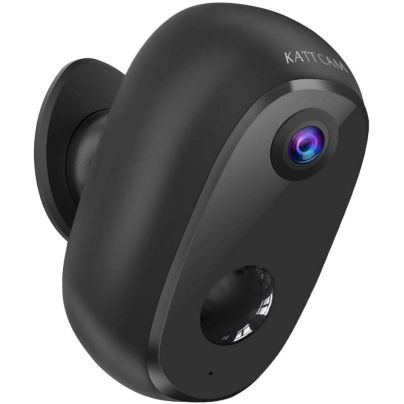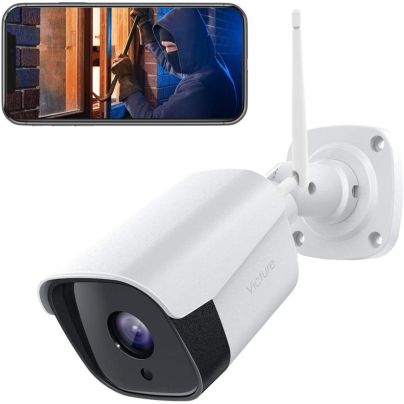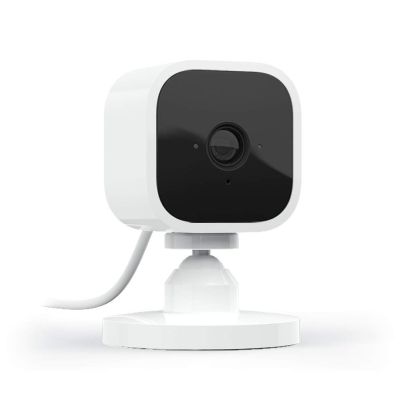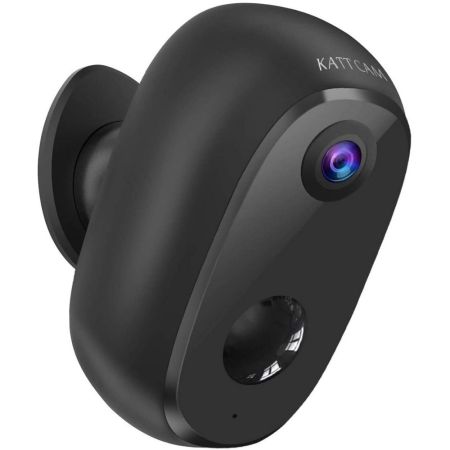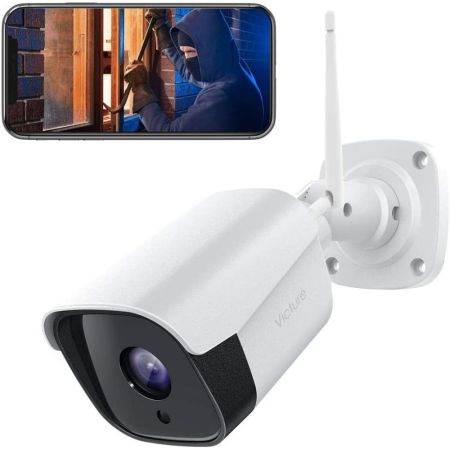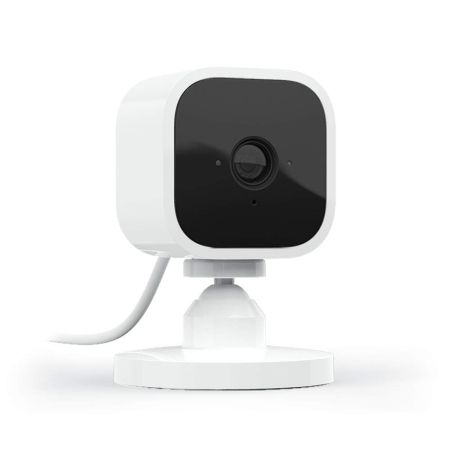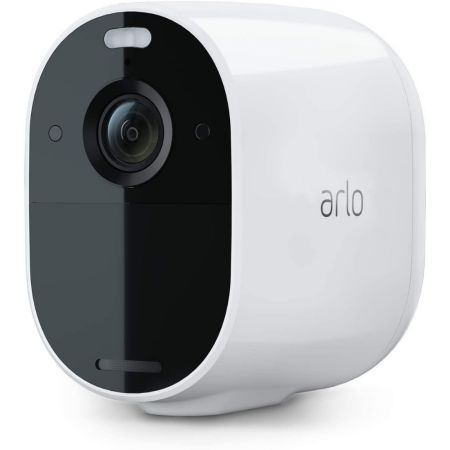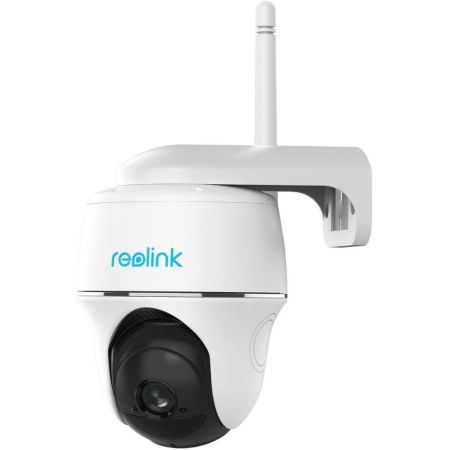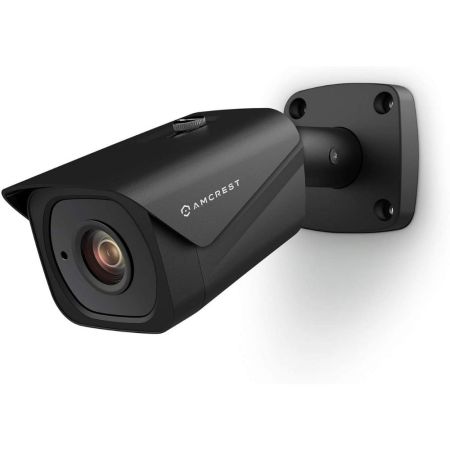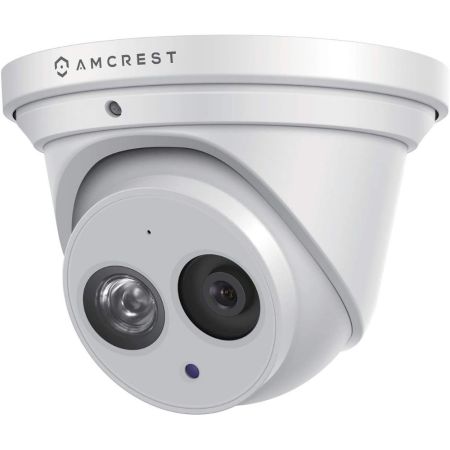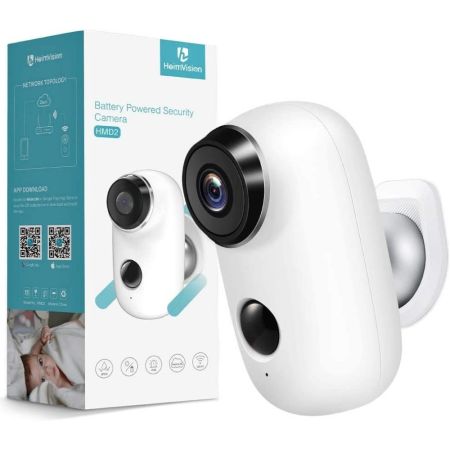We may earn revenue from the products available on this page and participate in affiliate programs. Learn More ›
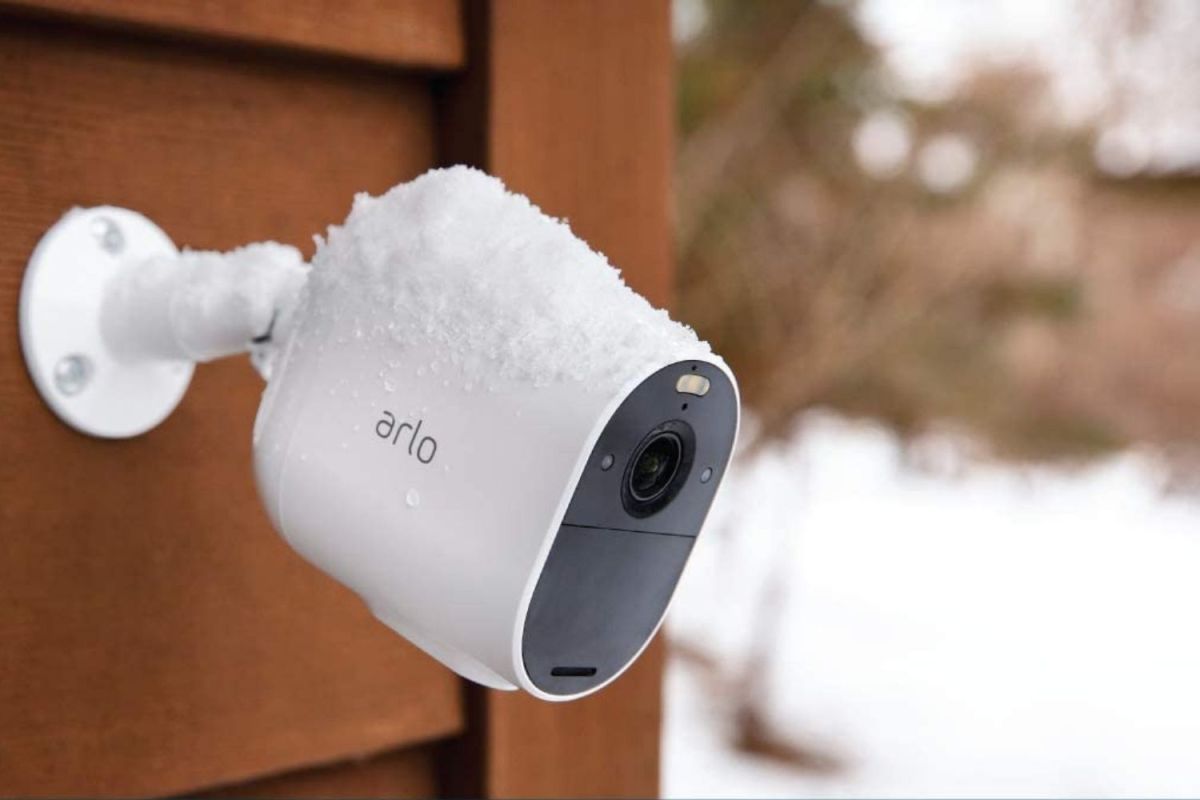
Most nefarious activities that might take place on your property, be it car theft, vandalism, break-ins, or trespassing, would likely take place under cover of night. This means the security cameras you install in and around your home need night vision to surveil your property adequately, perhaps in addition to a doorbell camera already in use.
The best night vision security cameras offer clear pictures of at least 1080p quality to allow you to easily make out faces and license plate numbers even in low-light conditions. These cameras use the infrared light emitted by the stars and the moon to enhance nighttime vision. Some use cutting-edge sensors to offer high definition with ranges spanning 150 feet or more. They also come with convenient user features, such as two-way talk, which allows you to interact with visitors and family members. These security cameras can save up to a month’s footage either on an SD card or through a subscription-based cloud service.
If you’re looking to enhance the security inside or outside of your home, then read on to learn what features you should consider when shopping for one of these surveillance devices and find out why the cameras below make the cut.
- BEST OVERALL: KATTCAM Security Camera Outdoor Wireless
- RUNNER UP: Victure Outdoor Security Camera
- BEST INDOOR: Blink Mini
- BEST OUTDOOR: Arlo Essential Spotlight Camera
- BEST COLOR VISION: Reolink Argus PT Camera
- BEST HIGH RESOLUTION: Amcrest UltraHD 4K Outdoor Bullet POE IP Camera
- BEST LONG RANGE: Amcrest UltraHD 4K Outdoor Turret PoE Camera
- ALSO CONSIDER: heimvision HMD2 Wireless Rechargeable Security Camera
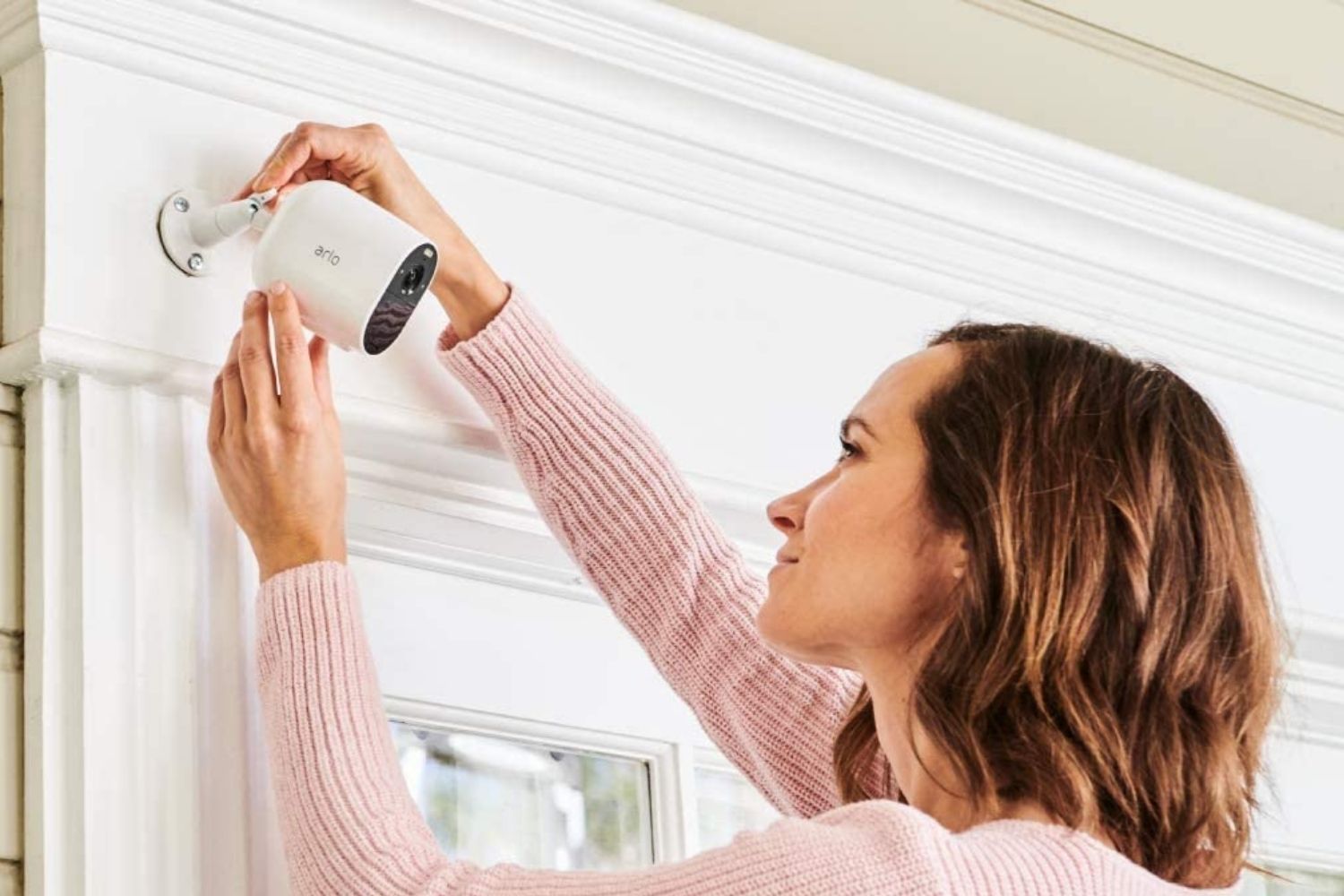
What to Consider When Choosing the Best Night Vision Camera
When searching for a camera that will enhance the security around your property, it’s crucial to consider numerous factors, including the environment in which it will be operating, its field of view, and the complexity of installation.
Monitoring Environment
The environment in which your camera will be operating makes a significant impact on the type of camera you should choose. If your camera is performing its duties outside, it needs to be durable enough to endure rain, snow, and high winds. You also need to protect the lens to prevent water droplets, ice, or snow from covering the lens and distorting images.
If the camera is mounted to a low area, it might be susceptible to vandalism or tampering. In this case, take into account the camera’s impact rating. You should also consider the size of the area you’re monitoring to determine how wide an angle the camera should have or if you need multiple cameras to cover the area.
Color Night Vision vs. IR-Cut Images
Night vision cameras will record in color or black and white. Traditional night vision cameras use an infrared-cut filter, which “cuts” the camera from color to black and white in darkness or low light to produce higher quality nighttime images.
In the past, if you wanted color images at night, you needed to add sufficient lighting in the form of a spotlight or floodlights, which basically turned night into day, defeating the purpose of night vision. With recent innovations in low-light technology and image sensors, some cameras can produce color images even in meager light without a spotlight.
Wired vs. Wireless
The terms “wired” or “wireless” refer to the camera’s power source and the means through which it transmits its footage. Wired cameras are hardwired to the internet via an ethernet cable, whereas wireless cameras are connected to the internet via wireless technology.
Cameras may be battery operated or may be wired to a power source. Fully wireless cameras are much easier to install, allowing you to mount the camera to your home without complicated wiring. They connect via Wi-Fi, allowing you to view stored footage from a smartphone. Many also work with virtual assistants such as Google Assistant and Amazon Alexa.
While wireless makes installation easy, it also means the camera is at the mercy of your bandwidth. A 1080p camera will drop to low quality 720p if the bandwidth is clogged by high use in your neighborhood or hampered by interference in the signal between the camera and router. A wireless camera also requires periodic battery replacement to prevent lapses in operation, which can be a hassle.
A wired system eliminates both of these problems, ensuring your camera doesn’t experience lapses in operation or video quality. If you use a dedicated computer monitor and hard drive as opposed to Wi-Fi to view footage, they also offer the security of a closed-circuit system, making them less likely to be hacked.
Due to the wiring that’s involved, wired cameras require professional installation, which adds up-front costs. Unless you plan on using a Wi-Fi connection, you also may need to set up a dedicated computer monitor to view footage as well as a DVR for recording, which can make the system expensive.
Resolution
When it comes to seeing in the dark, there are only two resolution options: 1080p and 4K Ultra. Both resolution levels allow you to make out faces and easily read license plates, although 4K Ultra will be a bit clearer. The most significant difference is with range. High resolution 4K cameras can see up to 150 feet or more in the dark, while most—though not all—1080p cameras are limited to 40 feet or less.
High resolution 4K cameras also use significantly more data. As a result, they require a wired ethernet connection to provide enough bandwidth to support a higher level of resolution. A 1080p camera uses less data and can therefore better transfer footage via a Wi-Fi connection. Lower-end 780p cameras don’t offer enough resolution to make them useful for nighttime use.
Field of View
Expect most nighttime security cameras to feature a field of view between 110 degrees and 120 degrees, which should be enough range to cover a broad swath of your front yard. Some cameras feature pan and tilt features that allow you to move them for near-360 degrees of coverage, although it’s important to note that they do not offer a greater field of view when in a fixed position.
Smart Tech Compatibility
Whether connected via Wi-Fi or an ethernet cable, most security cameras allow you to view live and recorded security camera footage from anywhere your phone has a data connection. Most security cameras offer optional monthly subscriptions to cloud data services. These services will typically store up to 30 days of video footage, eliminating the need for you to invest in a large storage device for your camera’s video footage. The cost of these services ranges from a few dollars a month up to $15 a month or more depending on storage capacity and the number of cameras.
Additional Features
Most security cameras do more than just provide you with video footage of your property. They also offer other features, including two-way talking capability that allows you to communicate with visitors, family members, and even pets through the camera. Some include spotlights for visibility and deterrence and even loud sirens that are motion activated to drive away trespassers or would-be intruders.
Installation
Installation varies from easy to expert level depending on the type of camera you purchase. A fully wireless camera that connects to your network via Wi-Fi and uses a rechargeable battery for power is easy to install. These units usually include mounting brackets that allow you to install them on your home in minutes with a power driver.
Cameras that require you to hardwire an ethernet line from the camera to your home’s router are more complicated installations and involve drilling holes in your home to run a line from the exterior to the interior. While you can install this type of camera yourself, it requires more skill and time. Cameras that require hardwiring to your home’s power grid for electricity are best left to the pros.
Our Top Picks
The list below takes into account the above considerations in selecting some of the top security cameras by class. These models come from the top manufacturers in the security camera business.
Best Overall
KATTCAM Security Camera Outdoor Wireless
See ItWith a wireless design that makes installation easy and an HD-resolution camera that captures excellent images in near darkness, this model from KATTCAM is one of the most effective night vision cameras you can buy. It features 1080p resolution at night at a range of up to 55 feet, with a wide-angle lens that offers 120 degrees of coverage. It automatically switches to black-and-white IR mode when it senses low-light conditions.
This camera, which begins filming when a motion-activated sensor is tripped, uses a rechargeable battery that will run for up to three months, depending on use. It connects to a smart device via a Wi-Fi connection. Footage is stored on a cloud server, which requires a monthly subscription or on an SD storage card that holds up to 128 gigabytes. Additional features include a built-in, two-way microphone and speaker.
Runner Up
Victure Outdoor Security Camera
See ItThis easy-to-install camera allows you to monitor your property at night at an affordable price. A 1080p, 110-degree wide-angle lens cuts to infrared mode in low-light conditions, producing a high-resolution, black-and-white image up to 50 feet away. The motion-activated camera connects to Wi-Fi, allowing you to view footage via an app on a smartphone. A standard 115-volt plug powers this camera, making installation easy.
This camera also includes some excellent additional features, including a two-way microphone and speaker, which enables you to talk to visitors or family members. With its waterproof design, this camera is mountable in many outdoor locations. Video footage is stored on a subscription-based cloud storage service or a 65-gigabyte SD card.
Best for Indoors
Blink Mini
See ItThis simple security camera from Blink allows you to monitor the inside of your home around the clock with high-definition, infrared night vision. It features a 1080p HD lens that turns on whenever the motion detection sensor is triggered. A compatible app lets you pick specific zones in its field of vision for motion detection, enabling you to zero in on the areas of most concern. A two-way microphone allows you to interact with Fluffy or Fido while you’re away.
This camera connects to your home’s network via Wi-Fi and stores footage in the cloud for a small monthly fee. A Blink smartphone app allows you to review live and stored footage. The app works with a virtual assistant, allowing you to turn it off and on or set it via voice commands.
Best for Outdoors
Arlo Essential Spotlight Camera
See ItWith solid construction designed to resist snow, rain, and heat, this camera from Arlo is a worthy sentry for the exterior of your home. It features HD-resolution 1080p video with color night vision that’s enhanced by a spotlight. It’s powered by a rechargeable battery that lasts up to six months, and a Wi-Fi connection makes it completely wireless, simplifying installation.
A motion detector automatically turns the camera on and sends alerts to your phone, letting you know when someone is on your property. This unit will connect to your home’s Wi-Fi or Arlo hubs and base stations. Additional features include a built-in siren and a two-way microphone and speaker. A subscription to Arlo Smart gives you access to 30 days worth of video clips.
Best Color Vision
REOLINK Pan Tilt Solar Battery Camera
See ItThis camera from REOLINK can offer up to 33 feet of full-color images at night, even in extremely low light conditions. Starlight uses highly sensitive sensors and a high-end lens to capture and amplify what little natural light is available, maintaining high definition with very little infrared light. While it will offer color images at night, it will switch to black-and-white mode in darkness to maintain resolution.
This Wi-Fi camera also offers unparalleled coverage, thanks to its wireless design, which allows you to mount it virtually anywhere. A pan and tilt feature gives it 355 degrees of coverage horizontally and 140 degrees vertically. The camera works with the Reolink app for playback on a smartphone. Using its two-way communication feature, you can communicate with visitors via the app on your smartphone. Video footage is stored on either a subscription-based cloud service or an SD card.
Best High Resolution
Amcrest UltraHD 4K Outdoor Bullet POE IP Camera
See ItThis camera from Amcrest uses a high-end image sensor to offer ultra high-definition 4K resolution even in low-light conditions. This 8-megapixel technology gives this camera a night vision range of up to 131 feet, while a wide-angle lens provides 112 degrees of viewing. This wired camera connects to your home’s network via an ethernet cable, ensuring a consistent, high-speed connection for its high-resolutions lens.
With its tough metal housing, this camera is capable of standing up to extreme weather. Additional features include motion detector alerts and 16x digital zoom.
Best Long Range
Amcrest UltraHD 4K Outdoor Turret PoE Camera
See ItThis camera boasts a night vision range of up to 167 feet, making it one of the most far-reaching security cameras you can buy. It uses an image sensor and an infrared lens to maximize available infrared light to offer exceptional nighttime images. Its 4K high-definition images provide unparalleled clarity. Just keep in mind that those high-resolution images require a lot of bandwidth, so this camera requires an ethernet cable connection to your router.
Also Consider
heimvision HMD2 Wireless Rechargeable Security Camera
See ItWireless security cameras offer the easiest installation but also require periodic battery changes, which can be inconvenient or result in gaps in footage. This high-end wireless camera from heimvision solves that problem by using solar power. It’s compatible with an HMS1 solar panel (sold separately), which keeps the battery charged, providing the convenience of wireless technology without the need for constant maintenance.
It features 1080p resolution and a lens that auto switches to night vision in low light. A 130-degree field of vision offers plenty of coverage. A motion sensor turns the camera on automatically, and a two-way microphone allows you to interact with visitors. This camera is waterproof so you can mount it outdoors or in. Video footage is viewable via a Wi-Fi connection and smartphone. This camera works with a cloud subscription service and is also compatible with a 128-gigabyte SD card.
FAQs About Night Vision Cameras
If you still have lingering questions about night vision security cameras, look below for further enlightenment.
Q. Does night vision work in total darkness?
Night vision uses the ambient infrared light created by the stars and moon, meaning these cameras won’t work on cloudy nights or in total darkness, such as in a basement or blacked-out room.
Q. Do all security cameras have night vision?
Not all security cameras have night vision. While all security cameras may be able to see to some degree at night, only those that use infrared technology will offer high-quality nighttime images.
Q. How far can a security camera see at night?
This varies depending on the model of the camera and the technology it is using. Most cameras with infrared technology can see between 30 and 40 feet at night. High-end cameras that use advanced sensor technology can see up to 170 feet.
Q. How many night vision cameras do I need?
This question depends on what you are attempting to secure and the camera’s field of view. If you are concerned about covering your front porch, you only need one camera. If you also require surveillance for the driveway, you may need to add a camera. A camera that covers 120 degrees may allow you to cover both with one camera. If you need to cover the entire perimeter of your home, you’ll need four or more cameras. If you need to surveil the inside of your home, that means an additional camera.
